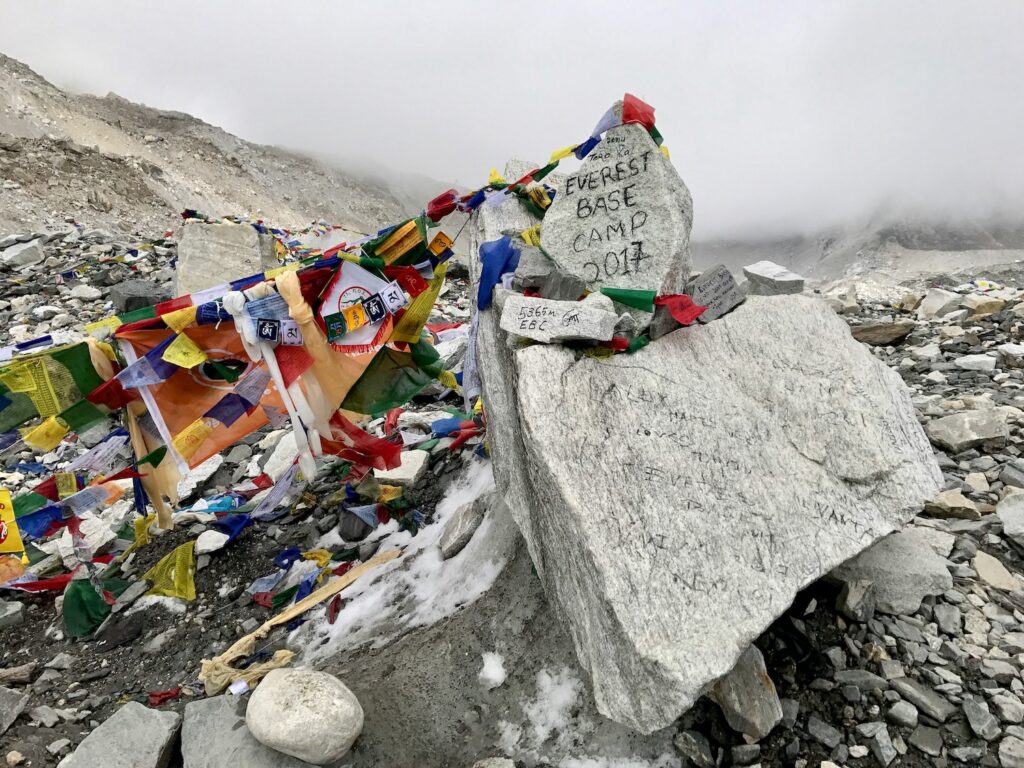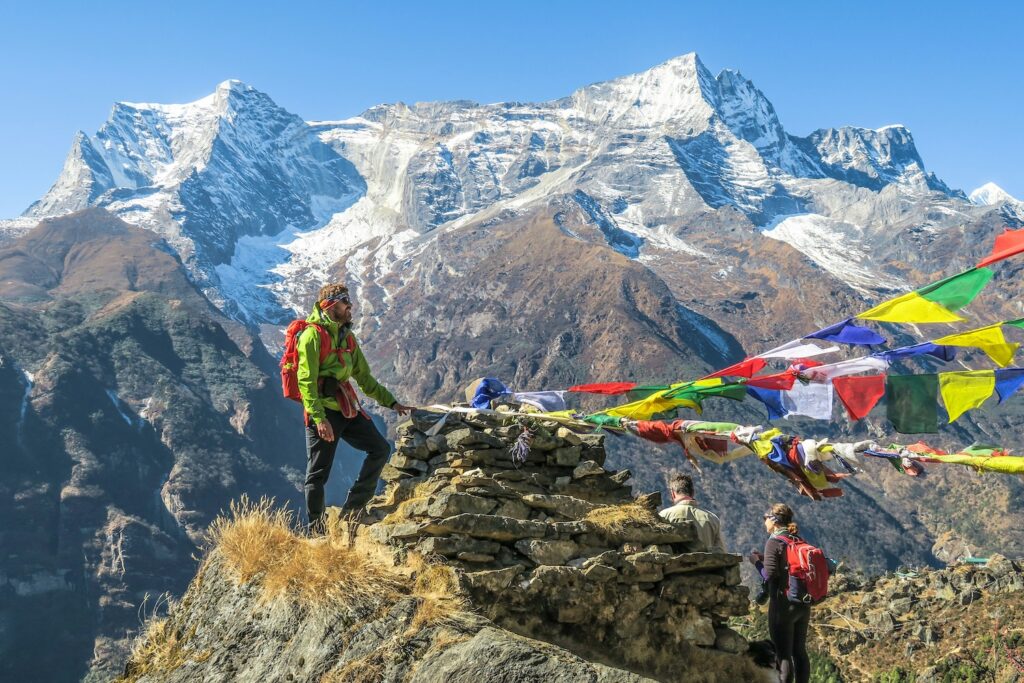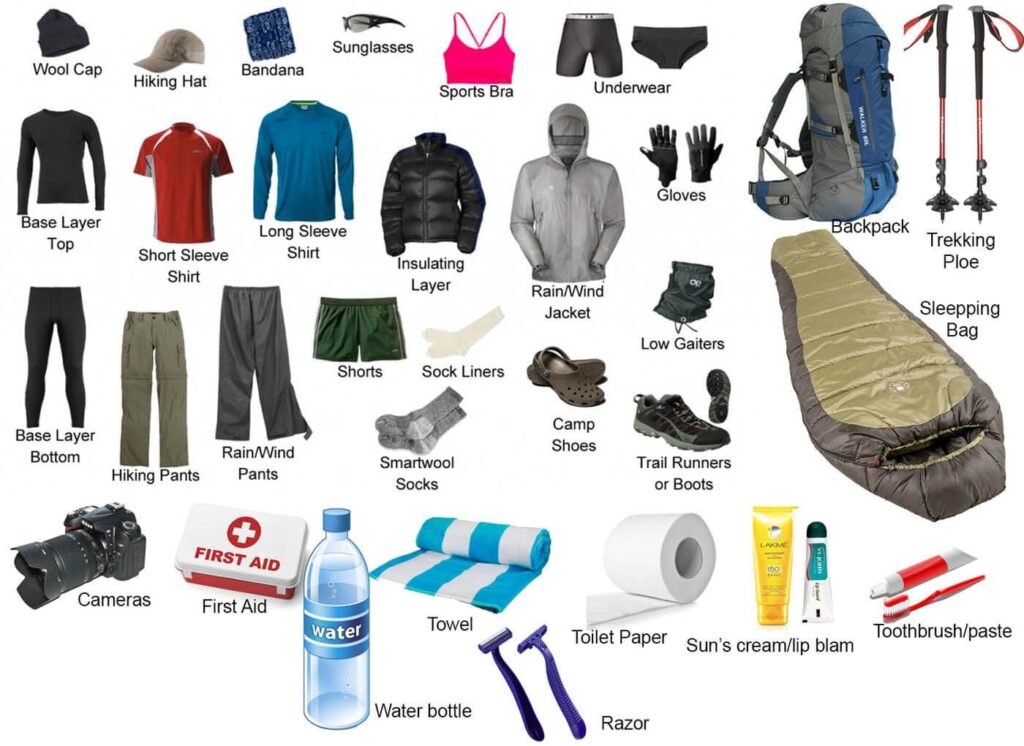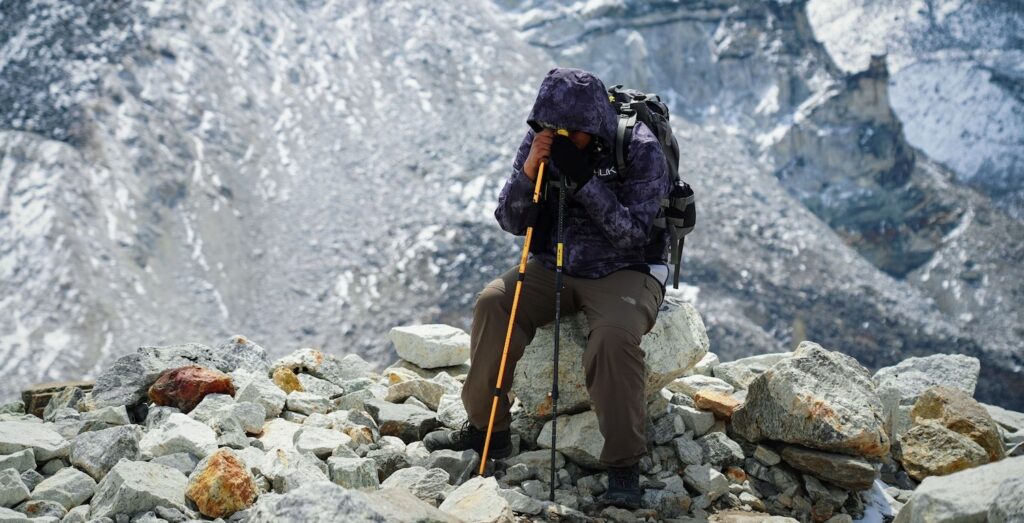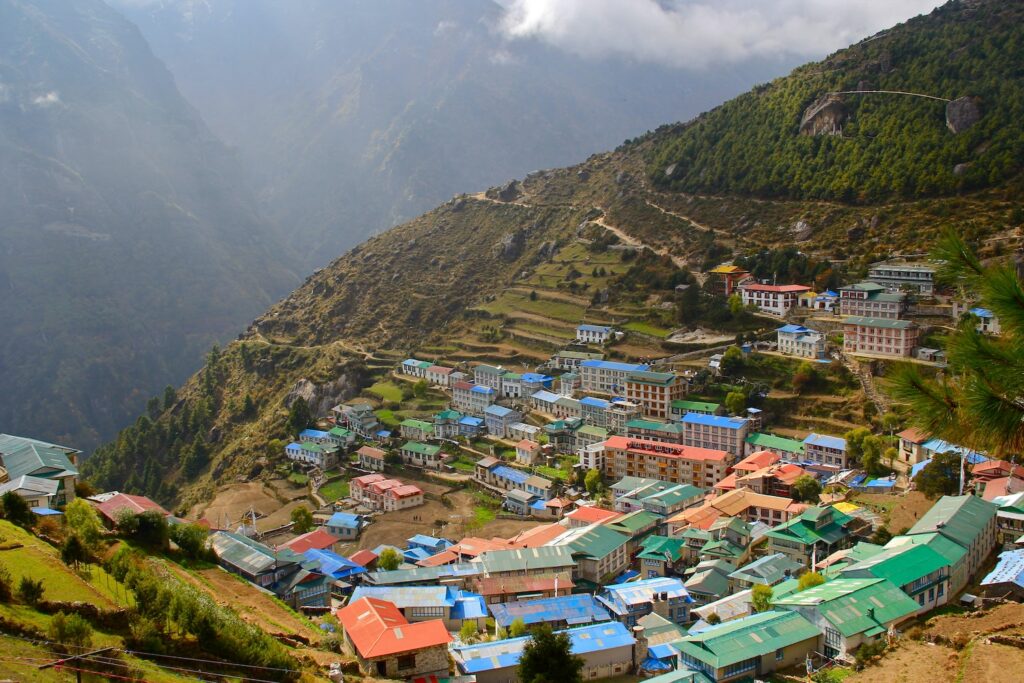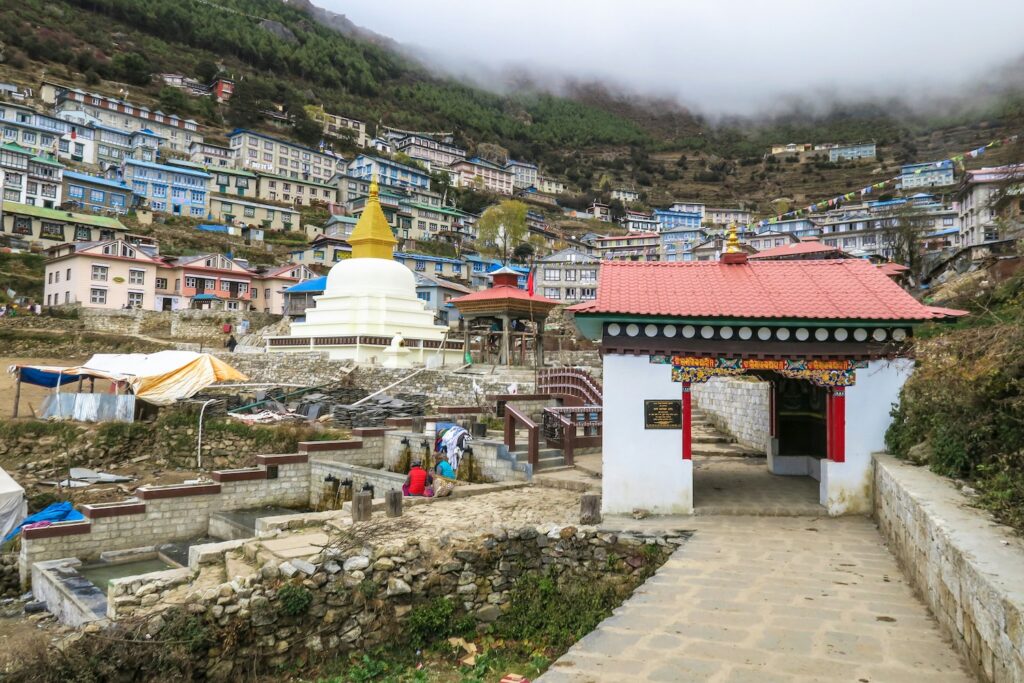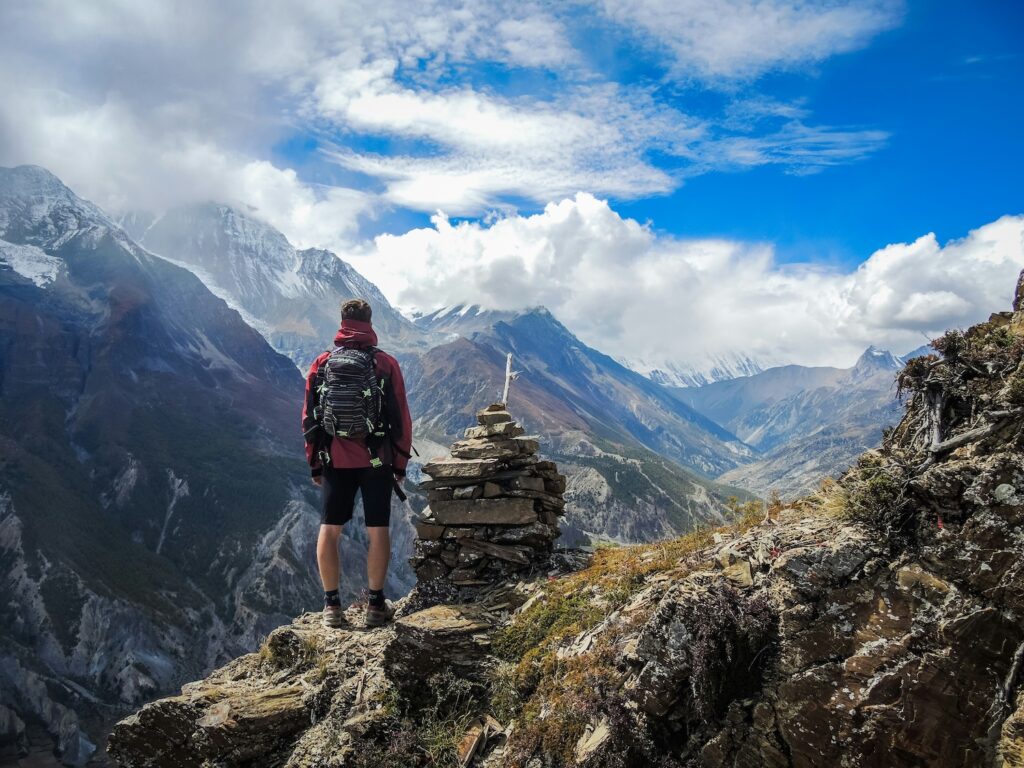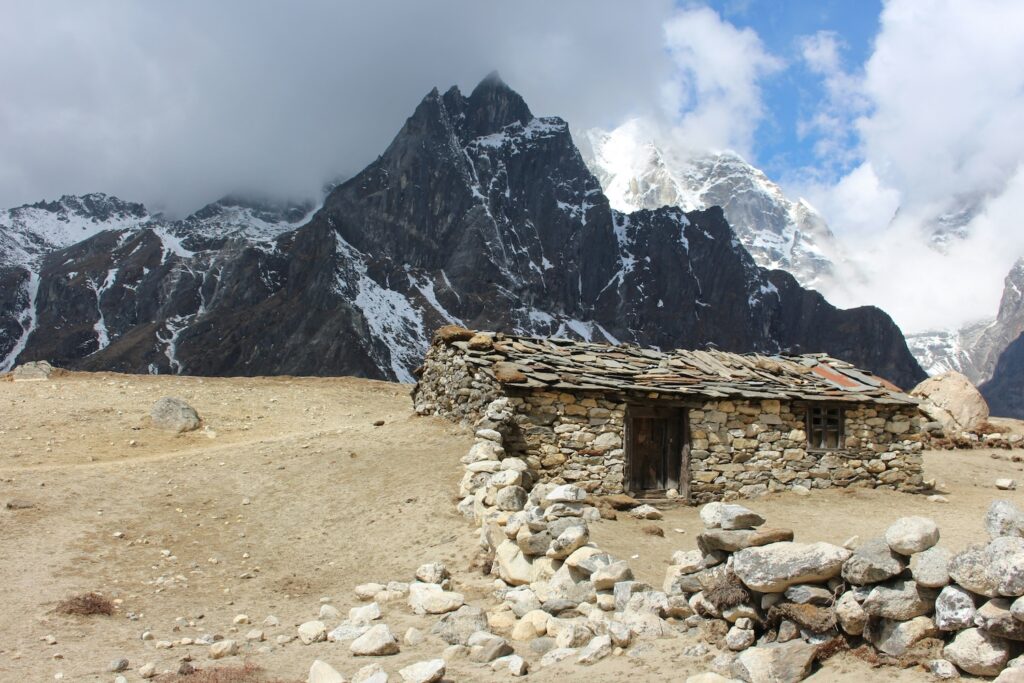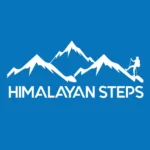
The Everest Base Camp Trek (EBC) is a once-in-a-lifetime adventure that takes trekkers to the heart of the Himalayas, offering awe-inspiring views of the world’s tallest mountain, Mount Everest. This legendary journey has captured the imagination of adventurers for decades, drawing people from around the globe to experience its rugged trails, remote villages, and the unparalleled beauty of Nepal’s Khumbu region.
Whether you’re a seasoned trekker or a first-time adventurer, the allure of the Everest Base Camp Trek lies not only in its breathtaking landscapes but also in its cultural richness. Along the route, trekkers encounter the vibrant Sherpa communities, ancient monasteries, and the serene spirituality that defines life in the Himalayas. From the bustling gateway of Lukla to the snow-covered expanse of Everest Base Camp, every step of the journey is a testament to human perseverance and nature’s grandeur.
For those embarking on this trek for the first time, it’s essential to be well-prepared. This guide is designed to provide practical advice and insights to help you navigate the challenges of altitude, pack the right gear, and make the most of your journey. Whether you dream of standing in the shadow of Everest or are curious about the trek’s cultural and scenic highlights, this comprehensive guide will equip you with everything you need to know to turn your dream of trekking to Everest Base Camp into reality.
Overview of the Everest Base Camp Trek
Location and Route
The Everest Base Camp Trek is situated in the Khumbu region of Nepal, a majestic corner of the Himalayas that boasts some of the world’s most stunning mountain landscapes. The trek begins in the bustling town of Lukla, often referred to as the gateway to Everest, accessible via a short yet thrilling flight from Kathmandu. From Lukla, the trail winds through verdant valleys, dense forests, and charming Sherpa villages like Phakding and Namche Bazaar, each offering unique glimpses into the local culture.
As trekkers ascend further into the mountains, the terrain transforms into a dramatic alpine landscape, with highlights including Tengboche Monastery, the serene Imja Valley, and the awe-inspiring Khumbu Glacier. The journey culminates at Everest Base Camp, situated at an altitude of 5,364 meters (17,598 feet), where trekkers can bask in the glory of being at the base of the world’s tallest peak. Many also choose to hike to Kala Patthar, a nearby vantage point offering unparalleled panoramic views of Everest and its neighboring giants.
Distance and Duration
The trek covers a total distance of approximately 130 kilometers (80 miles) round trip. Most itineraries span 12 to 14 days, depending on factors such as acclimatization stops and trekking pace. This duration includes two critical acclimatization days, usually in Namche Bazaar and Dingboche, to help trekkers adjust to the increasing altitude and avoid altitude sickness.
While the daily hiking distance varies, trekkers typically cover 5–15 kilometers (3–9 miles) per day. The route is structured to ensure gradual elevation gain, which is essential for a safe and enjoyable experience.
Difficulty Level
The Everest Base Camp Trek is considered moderately challenging, making it achievable for trekkers with a good level of fitness and determination. Although no technical climbing skills are required, the trek does demand physical stamina and mental resilience due to its high altitude, unpredictable weather, and rugged trails.
Trekkers should prepare for steep ascents, uneven paths, and the possibility of facing altitude-related challenges. Training that focuses on cardiovascular fitness, leg strength, and endurance is highly recommended. Mental preparedness is equally important, as the trek requires a steady pace, patience, and a willingness to adapt to changing conditions.
Despite the challenges, the rewards of trekking to Everest Base Camp are unparalleled. The breathtaking scenery, cultural immersion, and sense of accomplishment make this journey one of the most memorable adventures in the world.
Best Time to Trek
Optimal Seasons
Timing your Everest Base Camp Trek is crucial for ensuring the best possible experience. Two main trekking seasons stand out for their favorable weather conditions and stunning scenery:
- Spring (March–May):
Spring is one of the most popular times to embark on the trek. During this season, the weather is relatively stable, with clear skies offering unobstructed views of Mount Everest and the surrounding peaks. The trail comes alive with vibrant blooms, especially rhododendrons, which blanket the hillsides in brilliant hues. Daytime temperatures are comfortable, making trekking more enjoyable. However, this period attracts a significant number of trekkers, so the trails and tea houses may be busier. - Autumn (September–November):
The autumn months are widely regarded as the best time for trekking to Everest Base Camp. Following the monsoon rains, the skies are crystal clear, and the air is crisp, providing breathtaking views of the Himalayan landscape. Temperatures are ideal for trekking, and the dry weather reduces the likelihood of trail disruptions. Autumn also coincides with major festivals like Dashain and Tihar, offering trekkers a chance to experience the vibrant local culture. As with spring, this season sees high foot traffic, so early bookings for accommodations are recommended.
Off-Season Considerations
While the spring and autumn months are ideal, trekking during the off-season can also offer unique advantages and challenges:
- Winter (December–February):
For those seeking solitude, winter is an excellent time to trek to Everest Base Camp. The trails are less crowded, and the snow-draped landscapes create a magical winter wonderland. However, temperatures can drop significantly, especially at higher altitudes, with nights often falling well below freezing. Trekkers must be prepared for extreme cold and shorter daylight hours. Despite these challenges, winter trekking can be a rewarding experience for those with the right gear and preparation. - Monsoon (June–August):
The monsoon season brings heavy rainfall to the region, particularly at lower altitudes. While the Khumbu area receives less rain compared to other parts of Nepal, trekkers may still encounter slippery trails, landslides, and poor visibility due to cloud cover. Leeches can also be a nuisance on some sections of the trail. On the plus side, the lush green landscapes and fewer crowds can appeal to trekkers looking for a quieter experience. However, it’s essential to factor in potential delays and disruptions caused by weather conditions.
Preparations for the Trek
Proper preparation is key to making your Everest Base Camp Trek a safe and enjoyable experience. From building physical fitness to ensuring the necessary permits and health precautions, a well-thought-out plan will set you up for success.
Physical Fitness
The Everest Base Camp Trek is physically demanding, requiring a good level of stamina and strength. While it doesn’t involve technical climbing, the high altitude, long trekking days, and uneven terrain can challenge even experienced hikers.
- Importance of Cardiovascular and Strength Training:
Building cardiovascular endurance is crucial for handling the prolonged physical exertion and reduced oxygen levels at high altitudes. Strength training, especially focusing on your legs and core, will help you navigate steep ascents and descents with ease. - Suggested Exercises:
- Hiking: Simulate trekking conditions by hiking on uneven trails and slopes. Gradually increase the difficulty and duration of your hikes.
- Running: Improve your overall stamina and lung capacity by incorporating running or jogging into your routine.
- Stair Climbing: Strengthen your legs and prepare for the trek’s many uphill and downhill sections by climbing stairs or using a stair-stepper machine.
Starting your fitness regimen at least 2–3 months before the trek will give you ample time to build the necessary endurance and strength.
Permits and Documentation
Trekking to Everest Base Camp requires specific permits, which are mandatory for all trekkers. These permits help support the conservation of the region and ensure safety on the trails.
- TIMS Card (Trekkers’ Information Management System):
This card is required for all trekkers in Nepal and serves as a record for tracking trekkers in case of emergencies. It can be obtained in Kathmandu or Pokhara through a registered trekking agency or the Nepal Tourism Board. - Sagarmatha National Park Entry Permit:
This permit is necessary to enter the Sagarmatha National Park, where Everest Base Camp is located. It can be acquired at the Nepal Tourism Board office or at the park’s entrance in Monjo.
Both permits are easy to obtain, and trekkers should carry copies of their passports and recent passport-sized photographs for the application process.
Vaccinations and Health Precautions
Health and safety are critical when trekking in remote regions like the Himalayas. Ensuring you are vaccinated and prepared for potential health risks will give you peace of mind on your journey.
- Recommended Vaccinations:
Consult with your healthcare provider or a travel clinic to ensure you are up to date on vaccinations. Commonly recommended vaccines include:- Hepatitis A and B
- Typhoid
- Tetanus and Diphtheria
- Measles, Mumps, and Rubella (MMR)
- Rabies (optional, but advised for long stays in remote areas)
- Importance of Travel Insurance:
Travel insurance is an absolute necessity for the Everest Base Camp Trek. Choose a policy that covers:- High-altitude trekking (up to 6,000 meters).
- Emergency evacuation by helicopter.
- Medical expenses and trip cancellations.
Having a comprehensive insurance plan ensures that you are prepared for unexpected situations, whether it’s altitude sickness or a delay in your itinerary.
Packing Essentials
Packing smartly for the Everest Base Camp Trek is essential to ensure a comfortable and successful journey. The key is to strike a balance between packing light and carrying all the necessities for unpredictable mountain weather and high-altitude trekking.
Clothing
Dressing in layers is crucial for adapting to the varying temperatures and conditions along the trek. The layering system allows you to add or remove clothing based on the weather and your activity level.
- Layering System:
- Base Layers: Moisture-wicking thermal tops and bottoms to keep you dry and warm.
- Insulation Layer: Fleece or down jackets to provide warmth during cold mornings and evenings.
- Outer Layer: Waterproof and windproof jackets and pants to protect against rain, snow, and strong winds.
- Trekking Boots:
A pair of sturdy, well-fitted, and broken-in trekking boots is vital for comfort and support on rugged trails. Look for boots with ankle support and a durable sole for added grip.
Gear
The right gear ensures you’re prepared for the physical demands and environmental challenges of the trek.
- Backpack:
A 40–50-liter backpack is ideal for carrying your essentials during the day. Ensure it has comfortable straps, a hip belt, and multiple compartments for easy organization. - Trekking Poles:
These are invaluable for reducing strain on your knees during ascents and descents, providing balance on uneven terrain. - Sleeping Bag:
A high-quality sleeping bag rated for sub-zero temperatures is essential, as temperatures can drop significantly at higher altitudes. - Essential Accessories:
- Gloves: A pair of insulated gloves for warmth and lightweight gloves for milder conditions.
- Hats: A warm beanie for cold weather and a wide-brimmed hat or cap for sun protection.
- Sunglasses: UV-protected sunglasses to shield your eyes from the intense sunlight and glare at high altitudes.
Personal Items
Packing a few personal essentials can make your trek safer and more enjoyable.
- First-Aid Kit:
Include band-aids, antiseptic cream, pain relievers, blister patches, and altitude sickness medication like Diamox. - Water Purification Tablets or Filter:
Safe drinking water is essential, and purification tablets or a portable filter will help you avoid relying on single-use plastic bottles. - Snacks:
High-energy snacks like trail mix, protein bars, and chocolate provide quick energy boosts during long trekking days. - Power Banks and Solar Chargers:
Electricity can be scarce and expensive on the trail. Carry a fully charged power bank and, if possible, a solar charger to keep your devices powered for navigation, communication, and capturing memories.
Altitude Sickness and Safety Tips
Trekking to Everest Base Camp is a thrilling adventure, but the high altitudes pose a significant challenge that requires careful attention. Understanding the risks of altitude sickness and following safety protocols can help you complete the trek safely and enjoyably.
Understanding Altitude Sickness
As you ascend to higher altitudes, the reduced oxygen levels can impact your body, leading to Altitude Sickness. This condition can range from mild to life-threatening if not managed properly.
- Symptoms:
- Acute Mountain Sickness (AMS):
Common symptoms include headaches, nausea, dizziness, loss of appetite, and fatigue. AMS is mild but can escalate if ignored. - High-Altitude Pulmonary Edema (HAPE):
A more severe condition where fluid builds up in the lungs. Symptoms include shortness of breath, chest tightness, and a cough producing frothy fluid. - High-Altitude Cerebral Edema (HACE):
A critical condition involving swelling of the brain. Symptoms include confusion, inability to walk straight, and loss of coordination. HACE is a medical emergency.
- Acute Mountain Sickness (AMS):
- Prevention Strategies:
- Acclimatization:
Gradual ascent is crucial. Most itineraries include rest days, typically in Namche Bazaar and Dingboche, to allow your body to adjust to the altitude. - Hydration:
Drink plenty of water to stay hydrated, as dehydration can worsen altitude sickness. Avoid alcohol and caffeine, as they can dehydrate your body. - Pacing:
Trek at a slow and steady pace to conserve energy and reduce strain on your body. - Diet:
Eat light, high-carbohydrate meals to provide your body with easily digestible energy.
- Acclimatization:
Emergency Response
While prevention is the best strategy, being prepared for emergencies can make all the difference.
- Availability of Rescue Services:
Helicopter evacuation services are available along the trek route for emergencies. Ensure your travel insurance covers high-altitude trekking and helicopter rescues. In case of severe symptoms, descending to a lower altitude is the most effective treatment. - Carrying Diamox and Recognizing Symptoms Early:
- Diamox (Acetazolamide) is a commonly used medication to prevent and alleviate symptoms of altitude sickness. Start taking it as a preventive measure or as soon as symptoms appear (consult your doctor for dosage and suitability).
- Monitor yourself and your trekking group for early signs of altitude sickness. If symptoms persist or worsen, inform your guide or descend immediately.
Accommodation and Food
The Everest Base Camp Trek offers a unique experience of staying in remote mountain lodges and sampling simple yet nourishing meals that fuel your journey. Understanding what to expect in terms of accommodation and food will help you prepare and make the most of your trek.
Tea Houses
Tea houses are the primary form of accommodation along the trekking route. These small lodges are operated by local families and provide trekkers with a warm and welcoming environment.
- What to Expect:
- Basic Amenities: Rooms are typically modest, with twin beds, mattresses, pillows, and blankets. However, temperatures drop significantly at night, so carrying a high-quality sleeping bag is recommended. Bathrooms are often shared, and hot showers, when available, may incur an extra charge.
- Limited Facilities: Don’t expect luxuries like Wi-Fi (though it’s available for a fee in some places), and electricity may be scarce or unreliable, especially at higher altitudes.
- Tips for Booking During Peak Season:
- In peak trekking seasons (spring and autumn), tea houses can fill up quickly. If you’re trekking with a guide or porter, they often handle reservations in advance. For solo trekkers, arriving early at your destination for the day increases your chances of securing a room.
- Be prepared for occasional shared accommodations during particularly busy periods. A friendly and flexible attitude will go a long way.
Meals on the Trail
One of the highlights of the trek is experiencing the simple but hearty meals offered at tea houses. These meals are designed to provide the energy needed for long days of trekking.
- Typical Food Options:
- Dal Bhat: The staple meal of Nepal, consisting of rice, lentil soup, and vegetable curry. It’s nutritious, filling, and often comes with unlimited refills—perfect for hungry trekkers.
- Noodles and Soups: Hot noodle soups with vegetables or egg are popular choices, especially in colder weather.
- Momos: Steamed or fried dumplings filled with vegetables, cheese, or meat. A delicious snack or light meal.
- Western Options: Many tea houses also serve pancakes, pasta, omelets, and fried rice to cater to international tastes.
- Importance of Staying Hydrated and Eating Energy-Rich Foods:
- Hydration: Staying hydrated is essential, as dehydration can exacerbate the effects of altitude sickness. Most tea houses sell boiled water (safe for drinking) or you can use purification tablets for tap water.
- Energy-Rich Foods: Choose meals that are high in carbohydrates, as they are easier to digest at higher altitudes and provide sustained energy. Keep energy snacks like trail mix, protein bars, and chocolate handy for quick boosts during the day.
Key Highlights Along the Route
The Everest Base Camp Trek is not just about reaching the base of the world’s tallest mountain—it’s a journey through picturesque landscapes, vibrant villages, and unique cultural experiences. Here are the key highlights that make the trek unforgettable.
Notable Villages
- Namche Bazaar:
Known as the “Gateway to Everest,” Namche Bazaar is a bustling village perched at 3,440 meters. It serves as a critical acclimatization stop and a hub for trekkers, offering everything from cozy tea houses to gear shops and bakeries. The village provides stunning views of surrounding peaks like Thamserku and Kongde Ri, and the Saturday market is a lively showcase of local goods. - Tengboche:
Situated at 3,867 meters, Tengboche is famous for its Tengboche Monastery, the largest in the Khumbu region. This spiritual site is a must-visit, offering a serene ambiance with panoramic views of Everest, Ama Dablam, and Lhotse. If you’re lucky, you may witness a traditional Buddhist ceremony during your visit.
Landmarks and Scenery
- Kala Patthar:
For trekkers seeking the best panoramic views of Mount Everest and its neighboring peaks, the short climb to Kala Patthar is a highlight. At an altitude of 5,545 meters, this viewpoint offers unmatched vistas, especially during sunrise or sunset, when the mountains are bathed in golden light. - Khumbu Glacier and Icefall:
The Khumbu Glacier, stretching down from Everest, is a marvel of nature. Its dramatic ice formations and rugged terrain create an otherworldly landscape. The Khumbu Icefall, with its towering seracs and deep crevasses, is one of the most treacherous sections for climbers attempting to summit Everest. While trekkers don’t cross the icefall, seeing it up close is a humbling experience.
Cultural Experiences
- Sherpa Hospitality and Traditions:
The trek provides a unique opportunity to interact with the Sherpa people, renowned for their resilience, warmth, and deep connection to the mountains. Many tea houses are family-run, allowing trekkers to experience Sherpa hospitality firsthand. Learning about their traditions, including their reverence for the Himalayas as sacred, adds a cultural depth to the trek. - Local Festivals:
If your trek coincides with festivals like Mani Rimdu (celebrated in Tengboche Monastery during autumn), you’ll have a chance to witness vibrant Buddhist rituals, masked dances, and prayers. These festivals showcase the region’s spiritual richness and are a highlight for culturally curious trekkers.
Budgeting for the Trek
Proper budgeting is essential for a successful Everest Base Camp Trek, as costs can vary significantly based on your preferences and travel style. From permits to hidden expenses, understanding the financial aspects of the trek will help you plan effectively.
Cost Breakdown
- Trekking Permits:
- TIMS Card (Trekkers’ Information Management System): $10–$20, depending on whether you’re traveling with or without a guide.
- Sagarmatha National Park Entry Permit: Around $30, with an additional small fee for VAT.
- Guide and Porter Fees:
- Hiring a guide costs $25–$40 per day, while a porter costs $15–$25 per day. Combination guide-porters (who perform both roles) are available at $30–$35 per day.
- Guides provide expertise, route navigation, and cultural insights, while porters carry your heavier loads, easing the physical strain.
- Accommodations:
- Tea house rooms cost between $5–$20 per night, depending on the altitude and season. Prices are lower at lower altitudes and higher closer to Everest Base Camp.
- Meals:
- Food is a significant expense, with prices increasing as you ascend due to transportation challenges.
- Breakfast: $5–$8
- Lunch and Dinner: $8–$12 per meal
- Expect to spend around $25–$40 per day on food and drinks.
- Food is a significant expense, with prices increasing as you ascend due to transportation challenges.
- Estimated Total Cost:
- Budget Option: $700–$1,000 (independent trekking with minimal expenses).
- Mid-Range Option: $1,500–$2,500 (guided trek with decent accommodations and meals).
- Luxury Option: $3,000+ (private tours, high-end tea houses, and added services like helicopter transfers).
Hidden Expenses
While the core costs are straightforward, certain additional expenses can add up quickly if not accounted for:
- Charging Electronics:
Charging your devices (phones, cameras, power banks) is often available at tea houses but comes at a cost of $2–$5 per hour, increasing at higher altitudes. - Hot Showers:
Hot water for showers is a luxury at higher altitudes and costs $5–$10 per use. Some trekkers opt to skip showers altogether to save money and time. - Bottled Water:
A bottle of water costs $1 at lower altitudes but can climb to $3–$5 near Everest Base Camp. Using water purification tablets or a portable filter can reduce this expense and minimize environmental impact. - Tips for Guides and Porters:
Tipping is customary in Nepal and is an important way to show appreciation for your trekking staff. Budget approximately:- Guide: $10–$15 per day
- Porter: $5–$10 per day
Tips for First-Time Trekkers
Embarking on the Everest Base Camp Trek as a first-timer is an exciting yet challenging experience. With the right mindset, preparation, and a few essential tips, you can ensure a safe and rewarding journey.
Practical Advice for Dealing with Challenges
The trek comes with its share of physical and mental hurdles. Here’s how to navigate them effectively:
- Prepare for Altitude: Acclimatization is key. Follow your trekking itinerary closely, and don’t rush to higher altitudes. Stay hydrated and monitor your body for signs of altitude sickness.
- Pack Smart: Carry only the essentials to keep your backpack light. A porter can be invaluable if you want to reduce the strain.
- Layer Up: The weather can change rapidly in the Himalayas. Dress in layers to stay comfortable and be prepared for sudden drops in temperature.
- Stay Positive: Mental resilience is as important as physical fitness. Focus on the stunning scenery and your progress rather than the challenges.
Importance of Pacing and Listening to Your Body
- Go Slow and Steady: The trek is not a race. Maintain a steady pace to conserve energy and reduce the risk of altitude sickness. Trekking too quickly can lead to exhaustion or injury.
- Take Regular Breaks: Allow your body time to recover during the day, especially after steep climbs. Breaks also give you the chance to soak in the incredible views.
- Eat and Drink Consistently: Fuel your body with high-energy meals and stay hydrated. Even if you don’t feel thirsty, drink water regularly to combat dehydration caused by altitude.
- Pay Attention to Symptoms: Listen to your body and communicate with your guide if you experience headaches, dizziness, or other signs of altitude sickness. Ignoring these symptoms can lead to serious complications.
Engaging with Local Culture and Respecting the Environment
- Immerse Yourself in Sherpa Culture: Take the time to interact with locals and learn about their way of life. Respect their traditions and be open to experiencing the spiritual side of the trek, such as visiting monasteries and participating in cultural rituals.
- Support Local Communities: Purchase food, supplies, and souvenirs from local tea houses and shops. This contributes directly to the livelihood of the Sherpa people.
- Leave No Trace: Follow eco-friendly practices to protect the fragile Himalayan environment. Avoid using single-use plastics, carry reusable water bottles, and pack out all waste.
- Respect Wildlife: The region is home to unique flora and fauna. Observe animals from a distance and avoid disturbing their natural habitat.
Conclusion
The Everest Base Camp Trek is a journey like no other, offering an unforgettable blend of breathtaking landscapes, cultural immersion, and personal achievement. As we’ve explored throughout this guide, preparation is key—whether it’s building physical fitness, packing the right gear, or understanding the challenges of high-altitude trekking. By following these insights and tips, first-timers can confidently embark on this life-changing adventure.
Trekking to Everest Base Camp is more than just reaching a destination; it’s about the experiences along the way—the camaraderie of fellow trekkers, the warmth of Sherpa hospitality, and the awe-inspiring views of the Himalayas. Every step, though challenging at times, brings unparalleled rewards, from standing at the foot of the world’s tallest peak to witnessing the resilience and beauty of nature and culture at their finest.
If you’ve been dreaming of this trek, now is the time to start planning your adventure. Whether you’re seeking the thrill of conquering new heights, the peace of connecting with nature, or the joy of cultural exploration, the Everest Base Camp Trek offers it all. With proper preparation and an adventurous spirit, you’ll create memories that will last a lifetime.
The Himalayas are calling—are you ready to answer? Start planning your journey to Everest Base Camp today and take the first step toward an adventure you’ll never forget.
